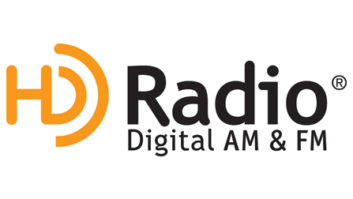SAN DIEGO — KPBS(FM) is a public radio station licensed to San Diego State University, broadcasting local news and public affairs, NPR, American Public Media and PRI programming to listeners in San Diego County, Calif. Our sister station, KQVO(FM) in Calexico, Calif., simulcasts KPBS in adjacent Imperial County, Calif. — occasionally breaking away to broadcast programming specially produced for the local audience.
Our studios on the San Diego State University campus, shared with sister station KPBS(TV), have remained analog since adding HD Radio services in 2005. A recent PTFP grant enabled us to implement a major facility upgrade that dramatically improved three of our five control rooms along with our network routing infrastructure.

Completed in March, 2012, the upgrade included three Harris PR&E RMXdigital-20 radio broadcast consoles, each outfitted with 18 faders. We also replaced a legacy hard-wired system with an innovative Harris PR&E VistaMax network routing solution based on a distributed architecture. The concept localizes source sharing, simplifies wiring and enhances network control in each studio.
The end-to-end Harris VistaMax network solution includes six single-rack-unit Harris PR&E VMXpress “edge devices,” ordered in a variety of analog and digital I/O configurations with bidirectional logic control. A central 4 RU VMConnect “hub” enables resource sharing and distribution of any I/O on the VMXpress boxes.
The upgrade has delivered unprecedented operational flexibility to route audio signals, share media resources and reconfigure the control rooms as needed. On-air sources previously were hard-wired to console faders and the complex network wiring scheme locked each control room into a specific function. This meant that one studio was restricted to on-air while another was designated for news production.
The VistaMax distributed architecture gives us the freedom to devote any network control room for more than a single purpose. An operator in one control room can access microphones, ISDN lines, satellite feeds and other signals from any networked device or location. Operators can move shows from one control room to another. And VMXpress logic controls can take control of any networked device — like disk recorders or servers — from any room.
The new distributed network topology greatly simplifies wiring, cabling and equipment maintenance in comparison to using a centralized routing system. It also simplifies the process of adding equipment or studios to the network. The distributed architecture brings the network devices within a few feet of the console in most situations and it simplifies the connection of every local control room. Sources connect to the analog or digital I/Os of the nearest VMXpress device.
Gone are the miles of cables that ran down the hallways, connecting every individual source to the central router in our terminal room. The VMConnect hardware lives in the terminal room, requiring hard-wired connections to the six VMXpress edge devices (three in the studios and three in terminal room) — and nothing else.
The VistaMax network-enabled RMXdigital-20 audio consoles can be networked, introducing another level of resource sharing. The Session Recall feature is a hit with our operators, especially for local news shows like “KPBS Morning Edition” or “KPBS Midday Edition.” Operators can configure the console according to their production requirements, store the settings and then recall them at any of the three consoles.
A Harris PR&E VMReact 1RU logic-processing device automates status monitoring and system control in each studio. The device serves many functions including automatic, user-defined corrective action when it detects dead air.
The grant money covered three studios and the distributed architecture upgrade, although two additional control rooms remain tied to the old hard-wired system. Having the VistaMax distributed network in place means that we’ll only have to connect the local sources in each room to a VMXpress when the budget allows, and wire them to the VMConnect hub. It is difficult to imagine a simpler way to bring new studios onto the network.
For information, contact Brian Clifford at Harris in Ohio at (513) 459-3714 or visit www.broadcast.harris.com.
Radio World User Reports are unpaid testimonials; they are intended to allow equipment users to explain why they chose a particular product. Radio World Product Evaluations, by comparison, are paid articles written by a contributing reviewer, usually an engineer.












